Single mum’s budget home buy solution
This single mum cut her new home costs in half in what could be the ultimate solution for desperate renters and struggling families searching for an affordable place to live.
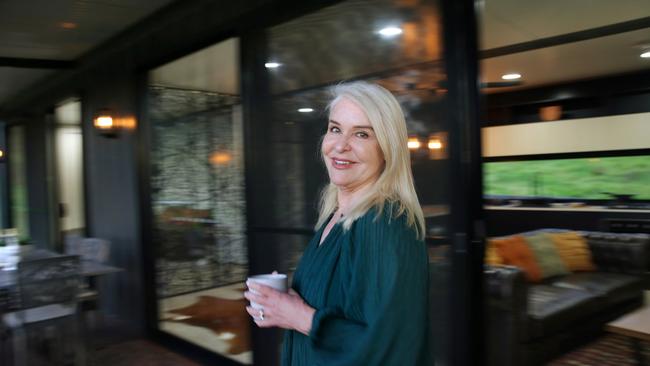
Home
Don't miss out on the headlines from Home. Followed categories will be added to My News.
More Australians are facing homelessness as soaring interest rates and tighter budgets make it harder to pay off mortgages or find affordable places to rent.
Older women are the most vulnerable due to a lifetime of reduced earnings, with more than 400,000 women aged 45 years or older now at risk of losing their home, according to Housing for the Aged Action Group executive officer Fiona York.
The number of homeless women aged over 55 increased by 31 per cent between 2011 and 2016, making them the fastest growing cohort to experience homelessness.
The picture becomes even bleaker with 2021 Census data revealing that females accounted for 81.7 per cent of the 6067 increase in people experiencing homelessness in 2021.
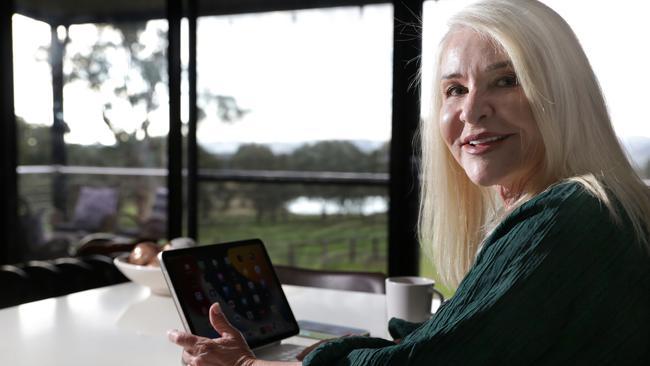
“An increasing number of older people are renting or paying off their mortgage as they reach retirement age … (which) puts them at much greater risk of homelessness,’’ York says.
“Older women are often left in a more difficult financial position later in life because they have taken time out of the workforce to care for children and have less super.
“It’s often a life shock like a rent increase, eviction, job loss, injury or marriage breakdown that pushes older women into homelessness.”
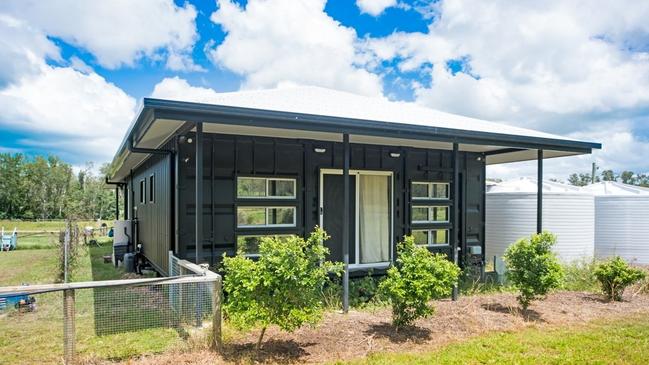
AFFORDABLE OPTIONS
For Australians of all ages, shipping containers are becoming a popular budget-savvy option with container homes costing a mere fraction of the price of traditional bricks-and-mortar offerings. They can be move-in ready within weeks of signing a contract, reducing the risk of price blowouts on building materials.
Affordable Container Homes Australia founder Peter Biddulph says they are also far more spacious than most people realise, with a typical 40ft (12-metre) container easily transformed into a two- to three-bedroom home complete with bathroom, open-plan kitchen and living space.
“They’re certainly not tiny homes – these things can be quite big,’’ Biddulph says.
“You can go up to four-bedrooms in a 40-footer and they’re good-sized rooms – big enough to put in a queen-sized bed and a good cupboard.”
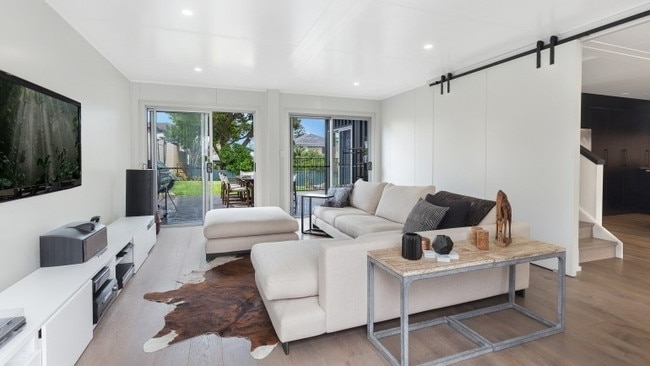
THE PRICE IS RIGHT
You would be hard pressed to build a home for $200,000 these days but, even if you could, Biddulph says a comparable container home would set you back just $80,000.
“They are just so affordable,” he says. “And that’s why people are going for them – because they are so much cheaper.”
Container Build Group chief executive Jamie Van Tongeren says 40ft granny flat conversions sell for as little as $50,000 and are “three times as big as a caravan”.
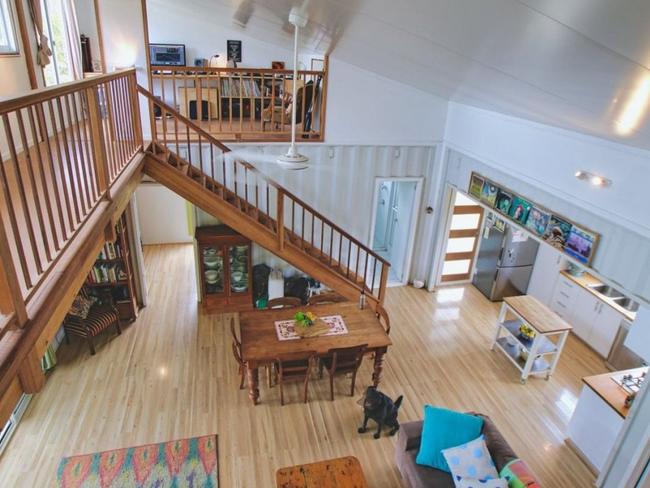
The modular construction methods make container homes easy to expand down the track, ideal for those who haven’t yet saved enough to build the house of their dreams, he says.
“You’ve got to live within your means, right? So rather than build the whole (dream home) now, just build it in stages,’’ Van Tongeren says.
“If you’ve got a 100 grand budget, you’ve got one kid and you want to have another one soon, how about you just spend 50 grand now and get the granny flat and then build on (later) in a two or three-stage design.
“For people that are trying to get into the property market, they are great.”
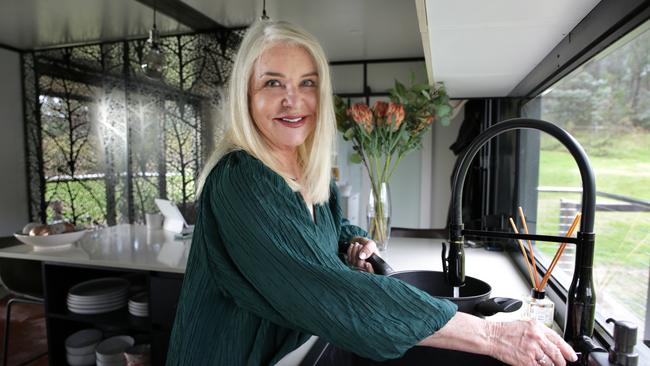
MOTIVATED BY MONEY
Concerned about where she would live in retirement, Melbourne-based Christiana O’Regan recently made the decision to put a container home on her family’s 150-acre farming property at Rylstone, NSW, about three-and-a-half hours’ drive from Sydney.
Two shipping containers were joined together to create a single-storey home with an open-plan kitchen and living area with a fireplace. The entire build, including internal fit-out, cost $140,000 and took just three months to complete.
“Really, my motivation (for building a container home) was the money,” says O’Regan, a cosmetic nurse and single mum with adult children.
“I’m kind of at the end of my career and I realised I didn’t have a family home and …
I didn’t want to be one of those 65-year-old ladies that everyone’s talking about now that are homeless.
“I really did start to get a bit nervous and I started thinking that I’m not going to get a bank loan at this age, so I really had to think about how I could afford to buy a home.”
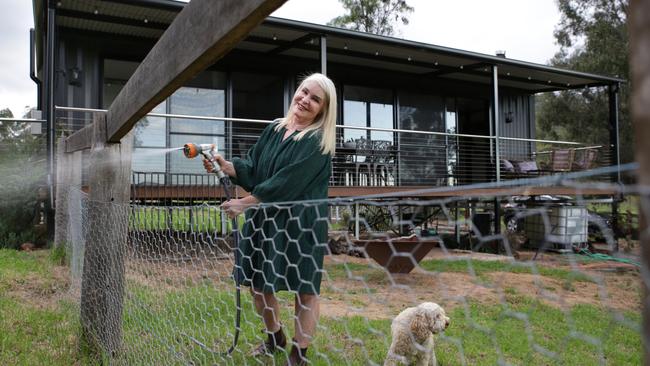
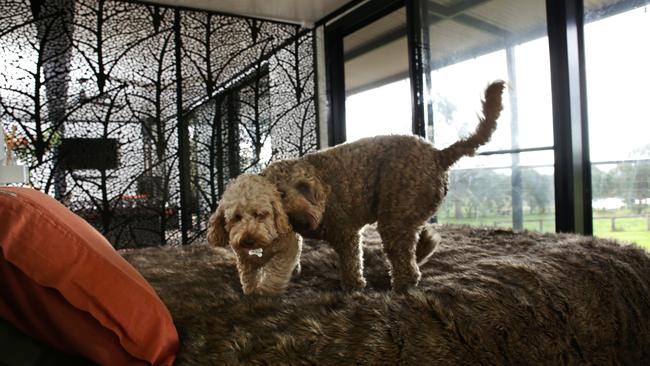
O’Regan is delighted with the finished product and how spacious it is, having comfortably hosted more than 10 friends inside at a time.
“I didn’t want it to look like a shipping container inside … I’m a bit of a princess, you know,” she says.
“So I put fancy, pressed metal-type walls in it and a really expensive kitchen with a glass window splashback and an island bench. The kitchen is just one big feature. It’s like an artwork in this big, massive open space.”
There are also plans to increase the already expansive deck that runs the full-length of the home to fit an outdoor spa.
“Most people tell me they didn’t think it would be so big,” Christiana says.
“It’s just magnificent. I love it. I would do it all again in a heartbeat.”

DATE IN THE DIARY
Biddulph’s container homes are delivered on site between 10 to 14 weeks of ordering – with a guarantee against the latter – while Van Tongeren has completed a five-bedroom container home within three weeks. By comparison, typical home builds can take more than a year to complete, with Master Builders Victoria recently reporting a 16-week delay on sourcing materials for house frames and trusses and a four-week wait on bricks.

UPGRADE TO LUXE
Feature cladding, pitched roofing, underfloor heating and high-end cabinetry can all be used in container homes. “If you want to build a $1.8 million house in Sydney, we can build it for $900,000,” Van Tongeren says.
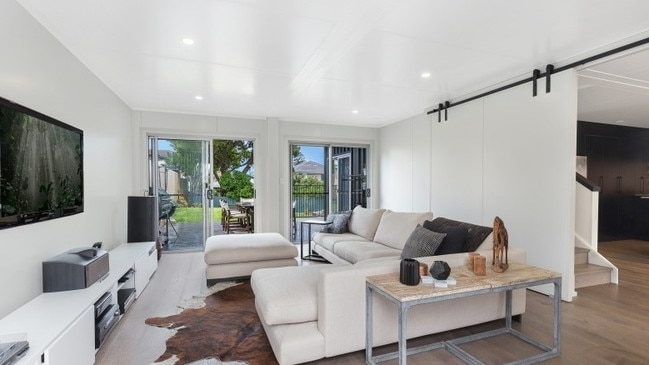
THE FINE PRINT
Container homes from reputable suppliers are fully-insulated, have double-glazed windows and come with building warranties, much the same as a traditional home. They can be built off-grid and are typically fire and flood resistant.
“They’re ridiculously strong,” says Van Tongeren, who warns against lesser-quality containers from overseas.
Development approvals are required. While laws vary in each state, the increasing trend for container homes has seen a corresponding spike in unlawful installations.
“Getting the right approvals ensures that development is appropriate … (and) constructed in a way that is safe and compliant with the Building Code and Australian Standards,” says Emma Clay, from the Wattle Range Council in South Australia.




